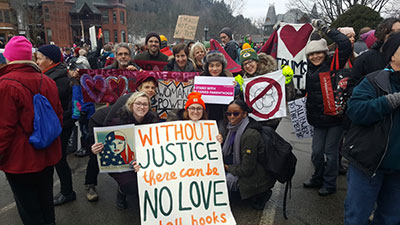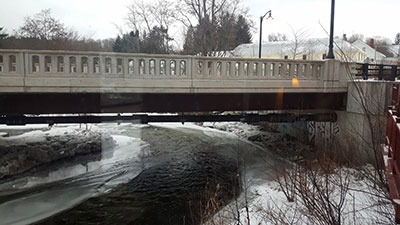Moving past comfort zones

The thing about going into a new situation/environment without a plan is that, as a creative practitioner, you have to be hyper aware of even the tiniest shifts around you that could possibly inspire the next great idea. You’re actively pushing your senses into overdrive in the hopes of catching faint signals in the air. In doing so, you’re forced to let go of yesterday and tomorrow, and be present always. Although this was a philosophy I often acknowledged, I never fully embraced it in my practice until last July while on residency in Aruba.
I didn’t have a plan per se, but I was most definitely prepared for anything that could be thrown my way. My suitcase was filled to capacity with every kind of art material imaginable and what couldn’t fit there was shoved into my carryon and handbag. My level of

preparedness was supreme. I had everything I could’ve ever needed but, in the end, used none of it in my work. That was the turning point in the way I understood residencies.
Had I tried to force the narrative of the work around the materials I brought then the outcome of that residency would’ve been incredibly different. With help from the Cuban visiting artist Humberto Diaz, I learned (sometimes reluctantly) to let go and trust my intuition. In many ways there was a great deal of unlearning involved in the process. Art school training begs the question “why?” over and over again, grinding us further down to nothing each time. Sometimes I try to

imagine how many great works I lost because I asked or was asked “why” too soon. Perhaps it isn’t that the question is irrelevant but merely ill timed.
Timing is something I’ve contemplated quite a bit since I’ve been here in Vermont. After the absolutely horrendous start I’ve had, I’ve been training myself to look past the glaringly obvious disasters to find what matters most, that ever evasive kernel of truth. It’s easy to get distracted by the enormity of the challenges we experience and lose sight of the bigger picture. Sometimes the bigger picture comes disguised as a few small windows of opportunity where everything works in tandem. This is where the real magic happens. But if you’re too focused on everything that’s wrong you could miss the signs that point to those escape routes.

After I spent an extra day trying to get here and the airline lost my luggage I was determined not to be disillusioned. Naturally, my first day in studio was not very productive but I persisted in spite of everything. The physical studio itself was enormous. The angled ceiling was maybe fifteen feet at the highest end. Six windows (three with a view of the Gihon River flowing beneath the Pearl Street bridge; one on the side of the building facing the passageway to the Barn; and two overhead on the angled ceiling) allowed for a more than generous amount of light to fill the room. It was intimidating, the idea that this space would be mine for a month. I knew almost immediately that whatever I made had to be sculptural; the room demanded that of me.
This time around was different. As a challenge to myself (as if I really needed another one) I packed just one material I had been collecting for years. I had no idea what I’d do with it but that was the point of residencies, to figure stuff out. Although my body was exhausted, my brain seemed to have missed that memo. I was extremely wired and could only think about making at least one disruption to this perfect space I was given. Since I didn’t have the one material I packed I started to assess the furniture placed in the studio for me: Four tables (two long, one small, one small and wheeled), one chair and one stool.
Just moments before, I had done the tour for the late arrivals with VSC’s receptionist Kate Westcott. In her talk one thing resonated with me above all else, the devastating 1927 flood. There it was, my first window. Prior to this I was already thinking about the duality of water and how, in as much as it’s known for having meditative qualities, it’s also the perfect metaphor for shared/collective trauma. That was where the last residency left me. So it worked out perfectly that I finally had time to continue along the same train of thought.
I was so struck by the flood story that I knew I had to make something in response to it. Instinctively, I started moving things around, away from the walls and more towards the center of the room. I was pleasantly surprised when I realized the tables were, in fact, simply inch and a half repurposed wooden doors sitting atop two saw horses and could be easily dismantled. Even better was the crossbar someone before me most likely installed, which dropped about two feet from the ceiling. This allowed me to push the installation even further by playing with elevation and tension between each piece of furniture.
Everything was working together beautifully. Time, it seemed, was on my side. I would soon find out, however, that I wasn’t quite ready for such a regimented daily program. The next few days whizzed by before I even noticed. We’ve had readings by a few of the resident writers and poets; slide presentations by the artists; presentations and studio visits by artists David Hess, Lynn Umlauf, B. Wurtz and Emily Cheng; open studios; bon fires; movie screenings; going away parties; banner making sessions for the Women’s March; road trip to Montpelier to join in solidarity with the thousands of women who came out to march; and readings by Howard Norman and Afaa Michael Weaver. It’s a wonder that we were able to produce as much as we did for open studios but we found ways to work around our busy schedules.
In September of last year I was nominated for a Vermont Studio Center residency fellowship and sponsored by the Reed Foundation. Notes from the Vermont Studio Center Residency is intended to be a series of articles chronicling my experiences at the U.S. residency starting from the issuance of the fellowship award until the conclusion of the month-long program in February, 2017.




.png)









